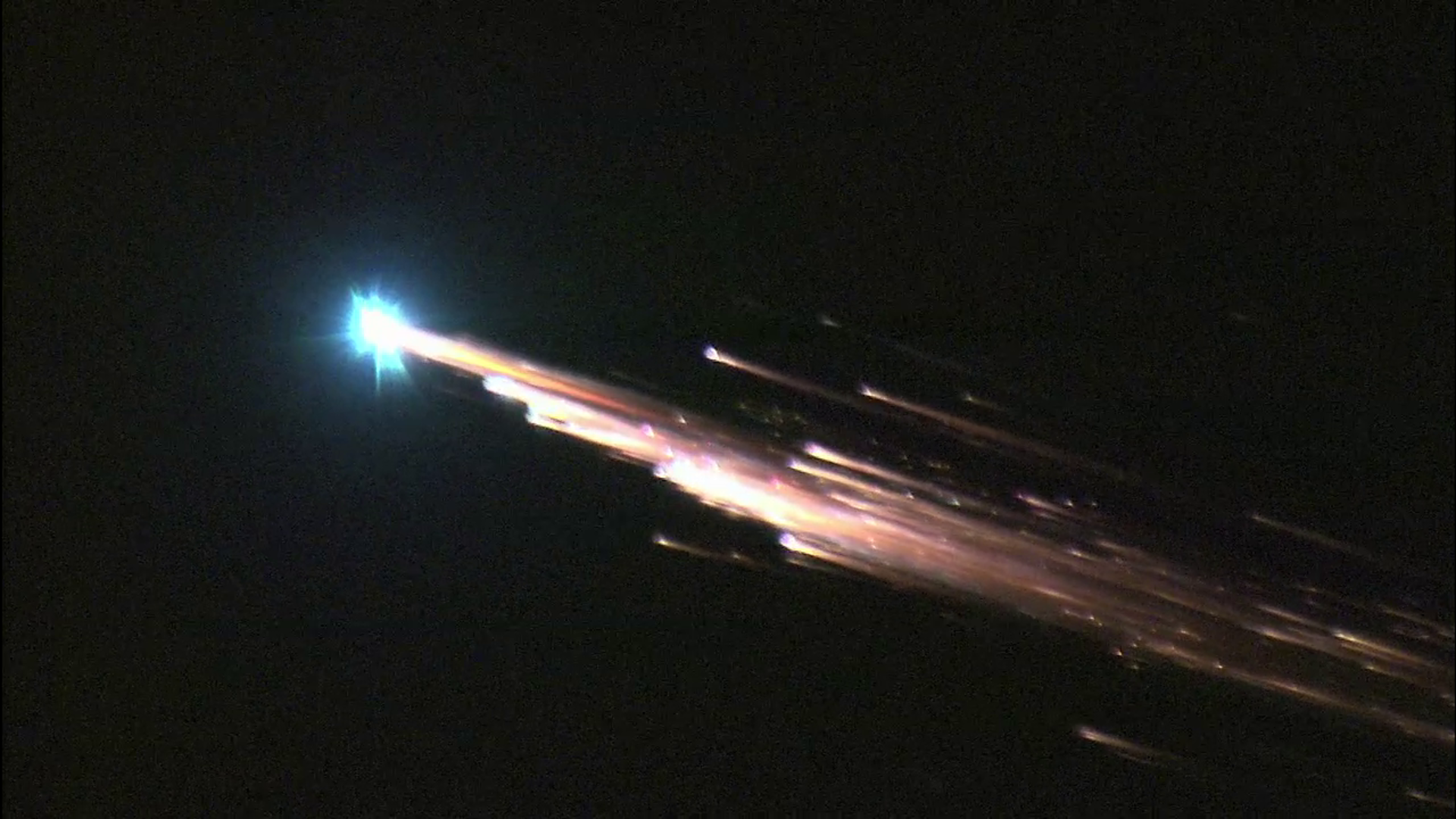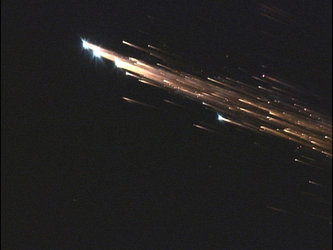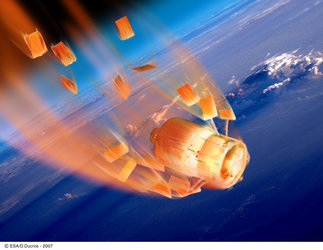Design for demise: bringing spacecraft down safely and efficiently
About once a week, a spacecraft reaches the end of its life, loses energy, and falls towards Earth, burning up in the atmosphere along the way. But sometimes parts of the spacecraft don't completely disintegrate and survive the journey, resulting in a violent collision with Earth's surface. With more and more satellites orbiting Earth, these incidences will become more frequent, so ESA Discovery & Preparation recently supported a study that explored partially controlling the re-entry of spacecraft through the atmosphere to keep us safe from harm.
As most of Earth's surface is covered by water, most space debris sinks unseen to the bottom of the ocean. But although there has been no recorded incident of a person being hit by space debris, the increase in the number of satellites orbiting Earth calls for immediate action. This latest study, carried out by Airbus, looked into how spacecraft can be specifically designed to re-enter the atmosphere safely, reducing the risk to people and property.

Some parts of a spacecraft need to be able to withstand high temperatures to do their job, so it is not an option to just make the entire satellite destructible upon impact with the atmosphere. Safe re-entry options also depend heavily on the size of the spacecraft. So we need to think outside the box about how to end missions safely.
As large spacecraft pose a bigger risk, their end of life is already controlled; they are forced to enter in such a way that any remaining pieces of debris fall in a specified area. This tends to be the largest uninhabited place on the planet — the South Pacific Ocean Uninhabited Area, also known as the 'spacecraft cemetery'. Controlled re-entry cuts re-entry time down to just a few days, compared to 25 years for a natural, or uncontrolled, re-entry.
The problem is that controlling the re-entry of a spacecraft requires a lot of fuel and is consequently expensive. De-orbiting large and therefore relatively high-risk spacecraft justifies the extra fuel, but medium-sized spacecraft are more likely to fully burn up in the atmosphere, and therefore pose a lower risk.


Access the video
In this study, Airbus explored another option for de-orbiting medium-sized spacecraft: 'semi-controlled re-entry' is safer than uncontrolled re-entry but cheaper than fully controlled re-entry.
Designing a spacecraft for fully controlled re-entry can be problematic, as it introduces many constraints and can lead to a mission being less environmentally friendly overall. The objective of this study was to find a middle ground between complete lack of control and using a lot of energy to force re-entry over a very specific area.

During semi-controlled re-entry, a spacecraft is made to re-enter the atmosphere within a set number of orbits, so that operators can predict where pieces of the spacecraft will fall. The first and last parts of the entry would be uncontrolled, but the middle part would be carefully controlled. This process requires 1000 times less force – and therefore much less fuel – than controlled re-entry, but is far less risky than uncontrolled re-entry.
The Airbus team explored how partially controlling re-entry would affect the overall design of a spacecraft. With much less thrust needed, satellites could use electrical propulsion systems instead of the more powerful chemical propulsion systems that fully controlled re-entry requires. The electrical systems are much cheaper and more energy efficient.

Overall, the investigation found that in many cases, semi-controlled re-entry is a very effective way of reducing the risks that space debris brings, whilst minimising the impact on the design of the main mission and reducing environmental impacts overall. It also found that semi-controlled re-entry is technically realistic with current technologies.
Semi-controlled re-entry is great for medium-sized spacecraft, where casualty risk could be up to five times lower using electrical propulsion systems. But for a similar risk reduction, large satellites would still need to use chemical propulsion, so the cost and energy savings of semi-controlled re-entry for these would be less significant compared to controlled re-entry. For all spacecraft, controlled re-entry remains the safest option.
The team propose that more research into semi-controlled re-entry is needed before it can be implemented in future space missions. A particularly important step is to increase the level of automation and autonomy in re-entry operations to further reduce costs.
This study isn't the only way that ESA is making space safer and more sustainable. Through its Clean Space programme, the Agency addresses the environmental impact of space missions, fostering green technologies, minimising the production of space debris and exploring in-orbit servicing of spacecraft. Discovery & Preparation is supporting a number of studies that contribute to the goals of Clean Space.







